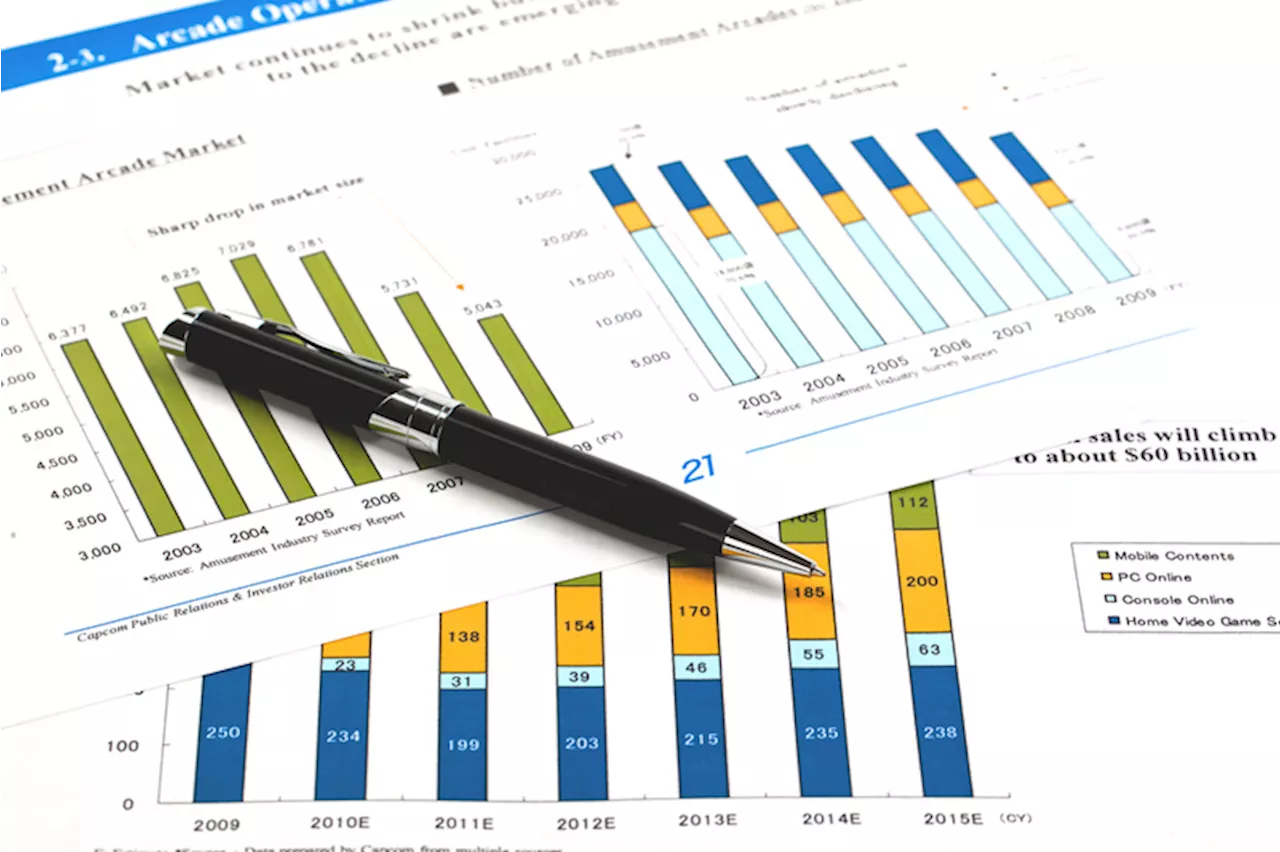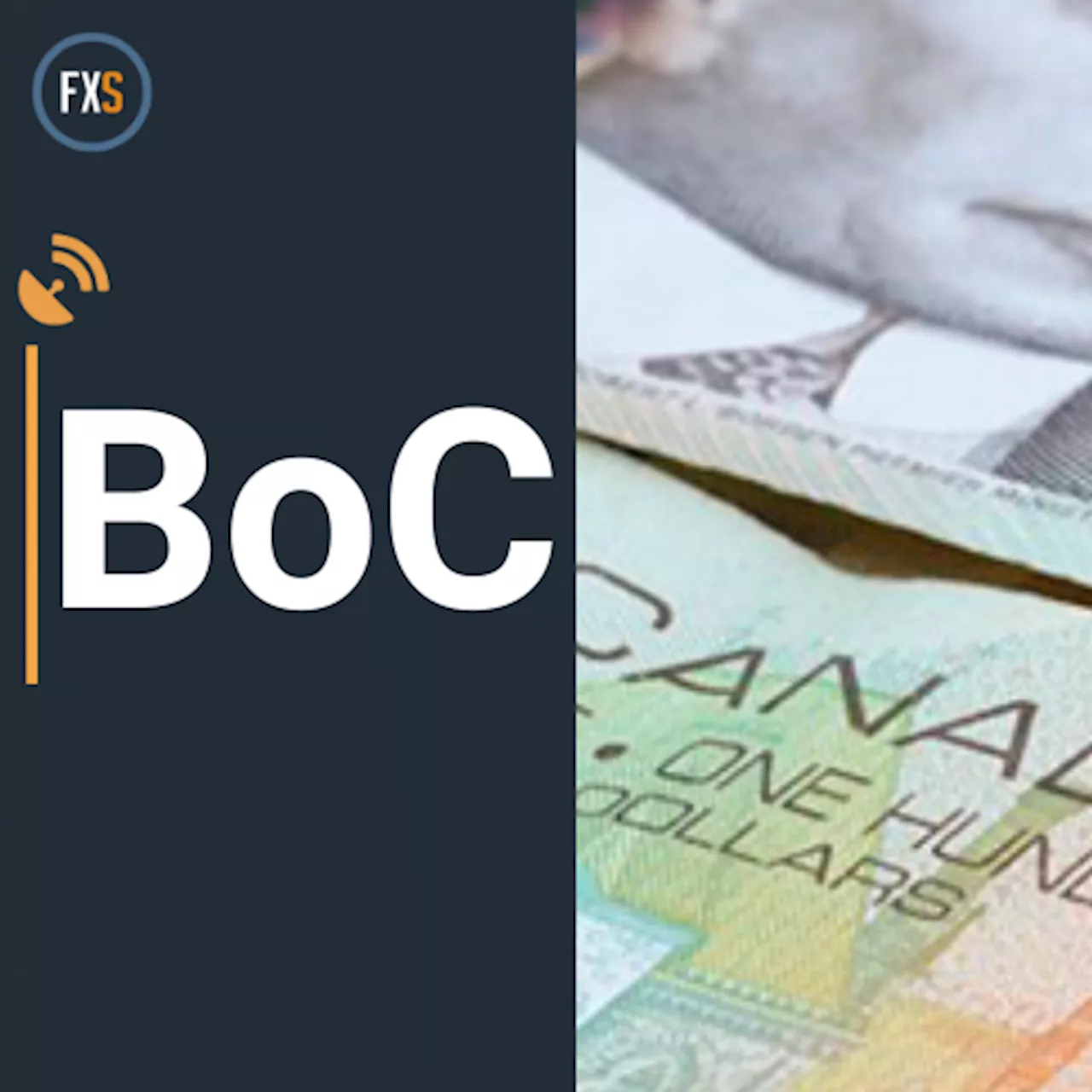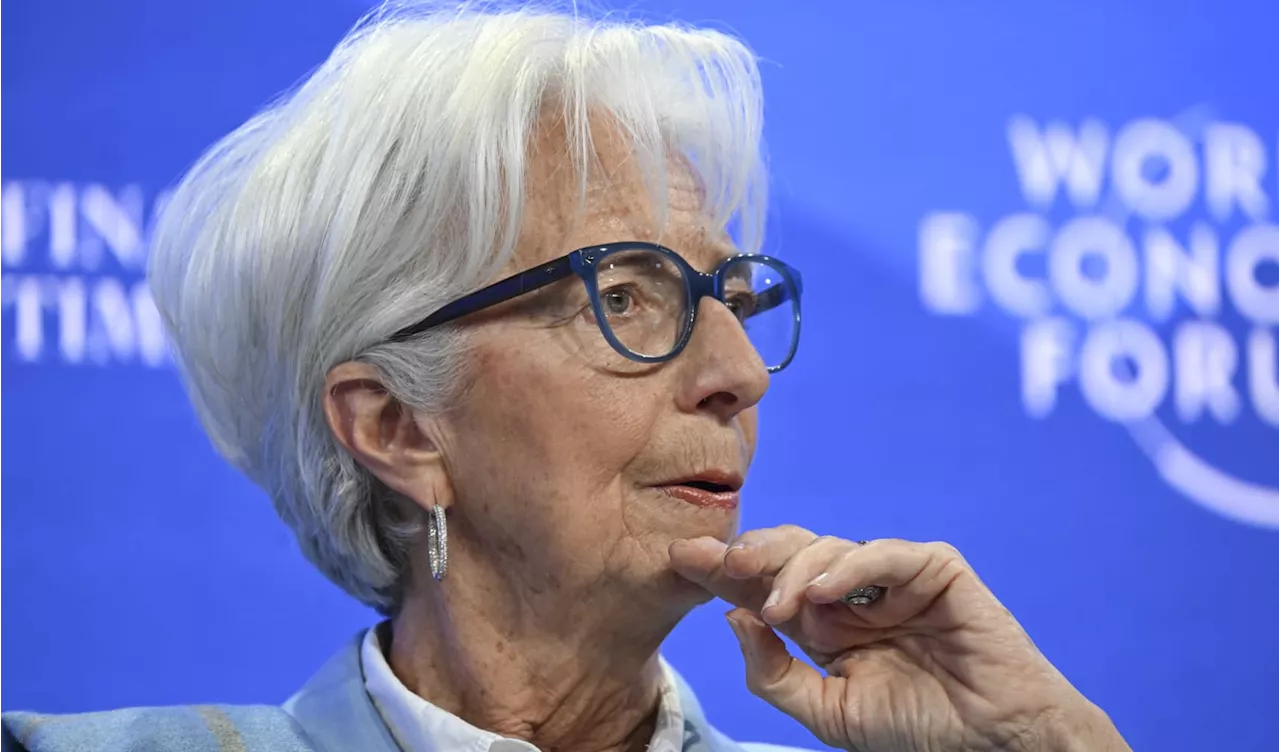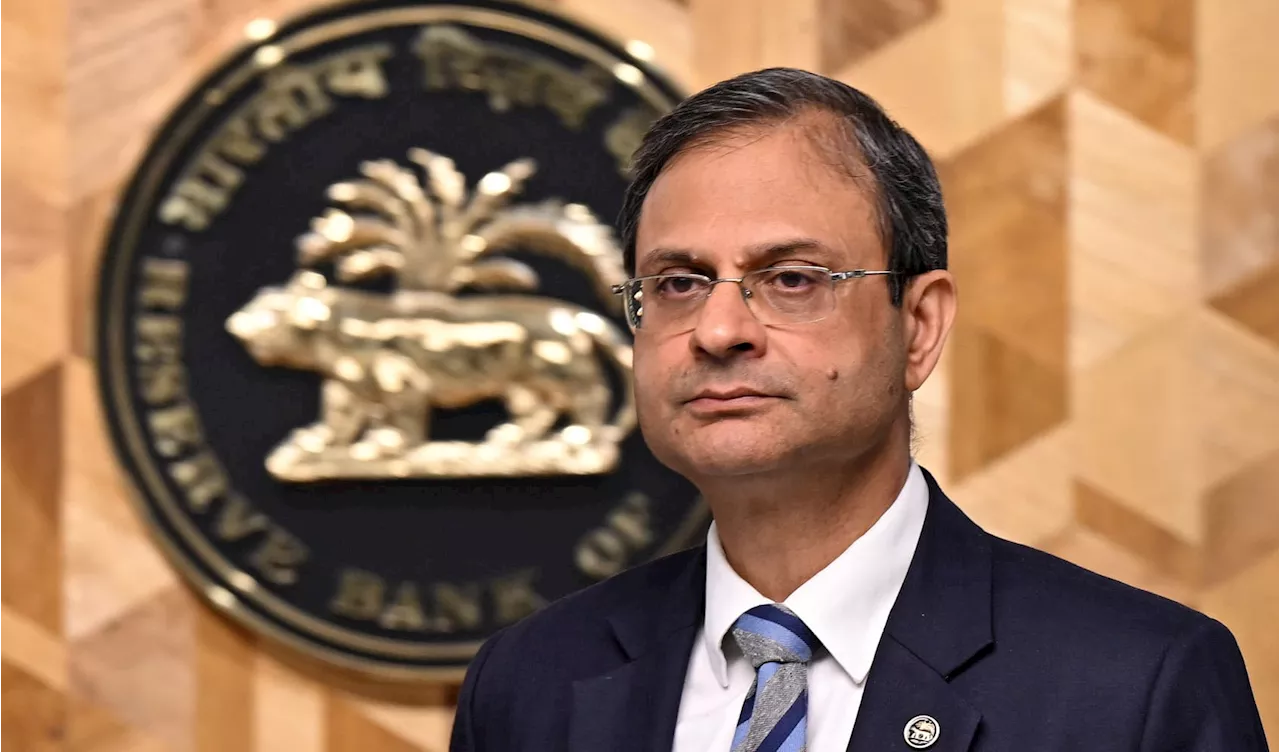The Reserve Bank of India (RBI) is anticipated to lower interest rates for the first time in over four years, amidst easing inflation and a struggling economy. The move comes as traders ramp up bets on a rate cut, pushing Indian government bonds to rally. While the RBI aims to stimulate growth, the weakening rupee poses a challenge, potentially leading to further inflation and capital outflows. The central bank's decision will be closely watched by investors, who will also analyze the statement of the new RBI Governor for insights into the direction of monetary policy.
The Reserve Bank of India ( RBI ) is widely anticipated to decrease the interest rate by 25 basis points to 6.25% at its policy meeting concluding on Friday. This would mark the first policy rate cut in over four years. Indian government bonds have experienced a notable rally in recent weeks, fueled by traders' increasing bets on an interest rate reduction at the February meeting.
The RBI is likely to cut benchmark interest rates during its ongoing policy meeting, as easing inflation provides it with the leeway to stimulate a faltering economy. However, the rupee remains at record lows.The RBI is poised to trim the repo rate by 25 basis points to 6.25% as it concludes its policy meeting on Friday, setting off what DBS Bank's chief economist, Taimur Baig, describes as a 'shallow rate cut cycle.' Indian bonds have rallied in recent weeks, with the 10-year benchmark yield declining by 16.5 basis points in approximately three weeks to 6.664 as of Wednesday's close, according to LSEG data, as traders increase their wagers for an interest rate cut at the February meeting. If the RBI does lower rates, it will be the first cut in more than four years. Investors will also closely scrutinize the statement of the new RBI Governor, Sanjay Malhotra, to assess the direction of the bank's monetary policy. Goldman Sachs anticipates a quarter-percentage point cut this week, coupled with a monetary policy shift to a looser 'accommodative' stance from 'neutral.' It also projects an additional 25-basis-point cut in April. The benchmark repo rate has remained steady at 6.5% for the past two years, as the domestic inflation rate has stayed above the central bank's medium-term target of 4%, and even breached the RBI's upper tolerance limit of 6% in October.The delay in the implementation of universal tariffs by the incoming U.S. administration provides some tactical space for the RBI to prioritize domestic growth ... and space to cut policy rates,' said Ruhul Bajoria, an economist at Bank of America in India. India's economy grew by 5.4% in the quarter ended September, its slowest expansion in nearly two years. The softer inflation readings have provided some room for the RBI to lower rates, in what is also the first policy meeting after the departure of its predecessor, Shaktikanta Das, who had maintained steady interest rates for nearly two years toward the end of his six-year term. The new senior monetary policy leadership could provide 'the MPC a fresh look, but also possibly a different approach,' Bajoria said. The governor also cautioned that the medium-term economic outlook remains challenging, citing risks including rising geopolitical conflicts and financial market turmoil. A weakening rupee has made it tougher to loosen the monetary policy. The rupee has been on a steady decline against a stronger dollar, shedding 3.6% against the dollar since early November. With the rupee hitting record lows against the greenback, any cuts to the bank's policy rate could spark a further rise in domestic inflation, putting further pressure on the currency and likely triggering capital outflows. India's central bank has been intervening in the foreign exchange market to help cushion a potential sudden outflows of foreign capital and avoid any steep fall in the currency. 'The level of volatility on which intervention is undertaken appears to have shifted higher,' BofA's Bajoria said, adding that 'a weak rupee can influence timing, but would not overrule the need for policy support.' Furthermore, India faces heightened scrutiny as Trump focuses on reducing trade deficits in 2023 — over $41 billion in the first 11 months of 2024 — The U.S. trade policy framework under Donald Trump's second presidency could strengthen the dollar and Treasury yields, keeping the U.S. interest rates elevated for longer. This could pose challenges for emerging economies like India, including the RBI, as boosting growth by loosening policy would mean widening the rate differentials and reducing the allure of its investment assets.
RBI Interest Rates Monetary Policy Inflation Rupee Economic Growth
United States Latest News, United States Headlines
Similar News:You can also read news stories similar to this one that we have collected from other news sources.
 Norges Bank to Cut Interest Rates in March, Despite Lower-Than-Expected InflationCapital Economics maintains its forecast for Norges Bank to start reducing its policy interest rate in March 2023. The firm anticipates a gradual reduction, despite December's inflation figures coming in lower than expected.
Norges Bank to Cut Interest Rates in March, Despite Lower-Than-Expected InflationCapital Economics maintains its forecast for Norges Bank to start reducing its policy interest rate in March 2023. The firm anticipates a gradual reduction, despite December's inflation figures coming in lower than expected.
Read more »
 Xiaomi 15 Ultra Launch Expected Sooner Than ExpectedXiaomi's President hints at an early February launch for the highly anticipated Xiaomi 15 Ultra, potentially beating previous rumors. The successor to the popular Xiaomi 14 Ultra is expected to boast an impressive camera system with a 200-megapixel periscope telephoto lens and the latest Snapdragon 8 Elite chipset.
Xiaomi 15 Ultra Launch Expected Sooner Than ExpectedXiaomi's President hints at an early February launch for the highly anticipated Xiaomi 15 Ultra, potentially beating previous rumors. The successor to the popular Xiaomi 14 Ultra is expected to boast an impressive camera system with a 200-megapixel periscope telephoto lens and the latest Snapdragon 8 Elite chipset.
Read more »
 Adidas to cut up to 500 jobs after posting better-than-expected holiday profitsAdidas plans to cut as many as 500 jobs in a bid to simplify its business, a person familiar with the matter confirmed to CNBC on Thursday.
Adidas to cut up to 500 jobs after posting better-than-expected holiday profitsAdidas plans to cut as many as 500 jobs in a bid to simplify its business, a person familiar with the matter confirmed to CNBC on Thursday.
Read more »
 Bank of Canada Expected to Cut Policy Rate by 25 bpsThe Bank of Canada (BoC) is anticipated to lower its policy rate by 25 basis points on Wednesday, marking the sixth consecutive reduction. The Canadian Dollar has been stabilizing against the US Dollar after a sharp depreciation in late 2022. Headline inflation in Canada remains below the BoC's 2% target, though the core CPI edged up in December. Despite the rate cut, the BoC is expected to maintain a cautious outlook due to easing inflation, a softening labor market, and GDP hovering near forecasts. Market attention will be focused on the BoC's tone, which could have a greater impact on the Canadian Dollar than the rate decision itself.
Bank of Canada Expected to Cut Policy Rate by 25 bpsThe Bank of Canada (BoC) is anticipated to lower its policy rate by 25 basis points on Wednesday, marking the sixth consecutive reduction. The Canadian Dollar has been stabilizing against the US Dollar after a sharp depreciation in late 2022. Headline inflation in Canada remains below the BoC's 2% target, though the core CPI edged up in December. Despite the rate cut, the BoC is expected to maintain a cautious outlook due to easing inflation, a softening labor market, and GDP hovering near forecasts. Market attention will be focused on the BoC's tone, which could have a greater impact on the Canadian Dollar than the rate decision itself.
Read more »
 ECB Expected to Cut Rates Again Amidst Diverging Paths with FedThe European Central Bank is widely anticipated to cut interest rates again on Thursday, marking its fifth reduction since June 2024. Markets are pricing in a 25-basis-point cut, which would bring the ECB's deposit facility to 2.75%. The decision comes as the ECB grapples with balancing a re-acceleration of euro area inflation with sluggish economic growth. President Lagarde's press conference will likely address the ECB's divergence from the U.S. Federal Reserve, which maintained interest rates on Wednesday.
ECB Expected to Cut Rates Again Amidst Diverging Paths with FedThe European Central Bank is widely anticipated to cut interest rates again on Thursday, marking its fifth reduction since June 2024. Markets are pricing in a 25-basis-point cut, which would bring the ECB's deposit facility to 2.75%. The decision comes as the ECB grapples with balancing a re-acceleration of euro area inflation with sluggish economic growth. President Lagarde's press conference will likely address the ECB's divergence from the U.S. Federal Reserve, which maintained interest rates on Wednesday.
Read more »
 ECB Expected to Cut Rates Again Amidst Diverging Monetary Policy PathsThe European Central Bank (ECB) is poised to announce another interest rate cut on Thursday, marking its fifth reduction since June 2024. This move comes as the ECB grapples with balancing rising inflation and sluggish economic growth in the euro area. Markets anticipate further rate cuts throughout the year, potentially diverging significantly from the U.S. Federal Reserve's cautious approach.
ECB Expected to Cut Rates Again Amidst Diverging Monetary Policy PathsThe European Central Bank (ECB) is poised to announce another interest rate cut on Thursday, marking its fifth reduction since June 2024. This move comes as the ECB grapples with balancing rising inflation and sluggish economic growth in the euro area. Markets anticipate further rate cuts throughout the year, potentially diverging significantly from the U.S. Federal Reserve's cautious approach.
Read more »
